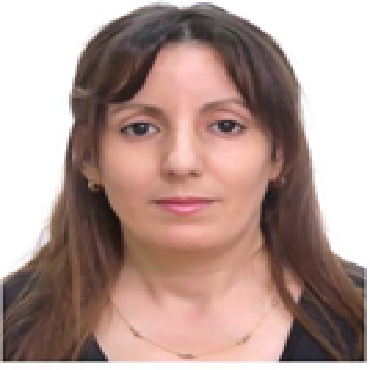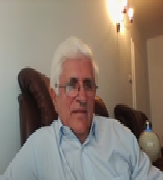Scientific Program
Keynote Session:
Title: Generalized Lorenz-Mie theories and mechanical effects of laser light, a celebration of Arthur Ashkin’spioneering work in optical levitation and manipulation.
Biography:
G. Gouesbet has been working in light scattering, modeling of two-phase flows, non linear dynamics and chaos theory., and is the promoter of the well-known generalized Lorenz-Mie theory. He authored about 350 papers in journals and as a whole about 550 papers in journals and proceedings. His citation count in Google scholar is about 13 000 with a h-index of 58. He has been serving in numerous committees and is a honorary editor of Journal of Quantitative Spectroscopy and Radiative Transfer.
Abstract:
The generalized Lorenz-Mie theory (GLMT, more generally GLMTs) [1] has been initially developed to address issues in optical particle characterization, more particularly in optical particle sizing, in order to simultaneously measure velocities and sizes of individual particles embedded in flows, with applications to spray combustion or plasma spraying, among others. This line of research, however, had two opportunities to meet another line of research, namely the one of Arthur Ashkin dealing with optical levitation, trapping and manipulation of macroscopic particles (such as droplets or beads), and who won a Nobel prize in physics last year. The first opportunity has been that GLMT (more generally GLMTs) is able to deal with mechanical effects of light whatever the size of particles and then indeed bridged the gap between the Rayleigh and ray optics regimes to which the theoretical part of the work of Arthur Ashkin was limited. The second opportunity has been that optical levitation experiments promoted by Arthur Ashkin have been used to experimentally test the validity of the GLMT. In this talk, as a celebration of Arthur Ashlin’s pioneering work concerning the mechanical effects of laser light, I shall offer a review and overview devoted to GLMTs and mechanical effects of laser light, both in Rouen where the GLMT has been built, and all over the world.
Title: AI in Physics
Biography:
Hakima Mokrane is a researcher in laboratory astrophysics & astrochemistry and now a researcher scientist in machine learning, she designs algorithms for solving AI problems. She graduated from Orsay university with a master (joint Honours) in Physics and Chemistry, before completing her PhD (in molecular physics & laboratory astrophysics) at Paris Observatory and Cergy University. Her interests span "all things ice and molecules", looking at how solid-state materials play a role in the processes of star and planet formation. She combines laboratory experiments with major facilities use, to understand the roll of ice in interstellar chemistry and planet forming collisions and exploit molecular dynamics simulations to understand the physical chemical properties of ice in space and now she is designing and building algorithms to solve AI problems and is interested in the problems of machine learning, deep learning and AI.
Abstract:
200 different species detected up today in the interstellar and circumstellar media have also been identified in icy environments. The fact that, for most of the species observed so far in the ISM, the most abundant isomer of a given generic chemical formula is the most stable one (MEP) suffers very few exceptions. Two couples of isomers, CH3COOH/HCOOCH3 and CH3CH2OH/CH3OCH3 whose formation is thought to occur on the icy mantles of interstellar grains. Here, we report a coherent and concerted theoretical/experimental study of the adsorption energies of: AA/ MF and EtOH / DME on the surface of water ice at low temperature. For each pair of isomers, theory and experiments both agree that it is the most stable isomer (AA or EtOH) that interacts more efficiently with the water ice than the higher energy isomer (MF or DME). This differential adsorption shows clearly in the different desorption temperatures of the isomers. It is not related to their intrinsic stability but linked to the fact that both AA and EtOH make more and stronger hydrogen bonds with the ice surface.The formation of water molecules from the reaction between O3 and D-atoms is studied experimentally for the first time. Ozone is deposited on non-porous amorphous solid water ice, and D-atoms are then sent onto the sample held at 10 K. HDO molecules are detected during the desorption of the whole substrate where isotope mixing takes place, indicating that water synthesis has occurred. The efficiency of water formation via hydrogenation of ozone is of the same order of magnitude as that found for reactions involving O-atoms or O2 molecules and exhibits no apparent activation barrier. These experiments validate the assumption made by models using ozone as one of the precursors of water formation via solid-state chemistry on interstellar dust grains.Here we applied machine learning and AI to build and improve moleculars reactions.
Title: Quantum mechanics as a continuous matter dynamics
Biography:
Eliade Stefanescu is research professor at the Advanced Studies in Physics Institute of the Romanian Academy. He discovered a phenomenon of penetrability enhancement of a potential barrier by dissipative coupling, developed a microscopic theory of open quantum systems, discovered a physical principle and invented a device for heat conversion into usable energy, and produced a unitary quantum relativistic theory. He is member of American Chemical Society and of Academy of Romanian Scientists. He received the Prize of Romanian Academy for physics in 1983, the Gold Plate as a founding member of Academy of Romanian Scientists, and the Prize “Serban Titeica” in 2014 for the book Open Quantum Physics and Environmental Heat Conversion into Usable Energy, Sharjah (UAE): Bentham Science Publishers
Abstract:
The starting point of this research is the fact that the conventional Schrödinger equation is contradictory to the fundamental Hamilton equations: a minus sign, essential for the energy conservation, is missing in the group velocity of a particle in the momentum space.The agreement of the quantum dynamics with the Hamilton equations is obtained only when the Hamiltonian in the wave packets representing a quantum particle is replaced by the Lagrangian. We consider a relativistic Lagrangian, as the relativistic principle of the time-space interval invariance is regarded as a relativistic quantum principle of invariance of the time dependent phase of a quantum particle. According to the general theory of relativity, any acceleration of a differential matter element in an extrinsic (non-gravitational) field is perpendicular to its velocity. This means that the dynamics of a distribution of matter, with a density positively defined as product of the total mass with the square of a coordinate function, can be described by a Fourier series expansion of waves perpendicular to the velocity. However, such a description makes sense only for a total mass, as integral of the particle density, equal to the mass in the Lagrangian in the time dependent phase of the wave packet – quantization condition. We consider black quantum particles with a Lagrangian containing only the relativistic term proportional to the particle mass, and ‘visible’ particles, with additional terms depending on the particle ‘charge’, and potentials interacting with this charge.For an electric field, with a vector potential conjugated to the spatial coordinates and a scalar potential conjugated to time, from the Hamilton equations as group velocities in the coordinate and momentum spaces, we derive the Lorentz force and the Maxwell equations. For a quantum particle in electromagnetic field, we derive relativistic equations depending on the rest mass and the particle momentum and velocity. For a quantum particle in gravitational field, we derive the Schwarzschild solution for the metric tensor in a central gravitational field. We show that although this solution has a singularity forbidding the passage of a black hole boundary, such a passage is possible for a quantum particle, where a differential matter element, as a part of a quantum particle, is joint to other matter elements and to other quantum particles which perturb the constant gravitational field considered in the Schwarzschild solution. In this theory, the Universe is considered as a distribution of ‘intrinsic’ matter characterized by a system of time-space coordinates, curved in a larger system of other coordinates, by a gravitational field of a distribution of ‘extrinsic’ matter of quantum particles. We derive the quantum particle dynamics in gravitation field, the spin of the intrinsic matter element interacting with a quantum particle we call ‘graviton’, and the spin of the extrinsic matter distribution of a quantum particle depending on the symmetry of the wave function describing this distribution.
Title: Realization of the relationship between quantum mechanics and relativity
Biography:
Mohamed daris is a third-year student at the Faculty of Science of Rabat he has completed the discipline in theoretical physics and physics of materials he has publications and participations in theoretical physics and systems in several journals.
Abstract:
Relativity and quantum mechanics remain two very binding things and are both separating either by method or by physical experience. In this section I will make an approach to better facilitate a connection between quantum mechanics and relativity that gives us a new vision on the fact that the two concepts can be related theoretically and experimentally to give birth to the new principles in the physical theory and to better improve theoretical and experimental research. The new conception of this principle develops scientific and technical research better.In this subject I was supposed to use more advanced methods and more develop to have a complete and satisfactory analysis of the problem for that I exploit quantum techniques peculiar to my subject which will allow me to better understand all the problems related to the quantum mechanics and relativity and try to bring them together in the same subject and in the same relationship which is the relationship that is to consider for this big problem to complicate and finally arriving at a final result.
Title: TIME – calculation process is yet to discover
Biography:
Abstract:
The thing we call time according to our clock is not the TIME- 4th dimension at all. When we say its 4 o’clock in the morning or 4 AM indicates that the earth is on a position from where it would be hardly seen the sun. Basically, the earth moves on its axis and a whole round on it is known as a day which is divided in to 24 hours. When the earth moves one whole rotation around the sun is known as a year or 365 days. Thus the hour, minutes, seconds are the scale of quantum rotation. So, when we see the time in our clock actually we are watching the measuring scale of quantum rotation of the earth around the sun and on its own axis. Not the time- the 4th dimension. Thus- Unit of time is not Years/Months/Hour/Minutes/Second/day. So, its required to change the term unit of measuring time is Years/Months/Hour/Minutes/Second/day. Because it’s the unit of measuring the rotation of the earth. This also refer that TIME/SPACE/RELATIVITY – researchers are doing wrong when they assume the unit of calculating TIME is Years/Months/Hour/Minutes/Second/day.
Title: A compact process of converting Hydrogen to K Mesons with applications in such as direct conversion to electrical power and use in Muon Catalyzed Fusion
Biography:
Dag H. Zeiner-Gundersen has more than 30 years of international management and engineering experience from renewable energy sector and oil & gas industry. Maintained the position as Norwegian Trade Commissioner. International judge at several innovation conferences. D.Sc in innovation and AI in innovation processes and Adjunct Professor. Ph.D Thesis in fluid and hydrodynamics with five multiple cited manuscripts. MBA, Law studies and MSc. An inventor and entrepreneur with a high number of patents. Specialist in general physics, comprehensive work in condensed hydrogen and nuclear physics, instrumentation, Nano engineering, turbine technology and subsea technology. Published in June 2016 a book on Amazon.com; Effective innovation in science, technology and business.
Abstract:
The technology presented herein represents a quantum leap in technology development for replacing traditional chemical and hydrogen fuel cell technology. Professor Leif Holmlid and our scientist have through the past decade applied annihilation processes into the field of energy production through the PCT patented CHE generator technology.In particle physics, annihilation is the process that occurs when a subatomic particle collides with its respective antiparticle to produce other particles, such as an electron colliding with a positron to produce photons. Annihilation principles are also used commercially in the medical industry, such as annihilation in positron emission tomography or PET scan. The CHE generator uses Hydrogen annihilation to produce clusters of high-energy particles, K Mesons, Pi Mesons and Muons. These particles are then directly converted to electricity or used in Muon Catalysed fusion processes. The process exhibits no harmful waste and the limited emission is controlled and secured.Our reactors convert Hydrogen and Deuterium to charged particles (K Mesons, Pi Mesons that decay to Muons) from laser annihilation. A key element is Hydrogen clustering on surfaces and advanced lasers interaction where point effect exceeds 100 MW. Hydrogen annihilation converts mass to energy far more efficient than a typical fusion process. While particles emitted from a fusion process typically has 3,5 MeV and 17,6 MeV, our process exhibits Meson and Leptons that decay in picoseconds to Muons with energy levels up to 100 MeV at 90% of speed of light. By controlling the emission process both in direction and in flux density, these Muons can in an integrated system be converted either directly to electrical power or used in Muon Catalysed Fusion processes.







